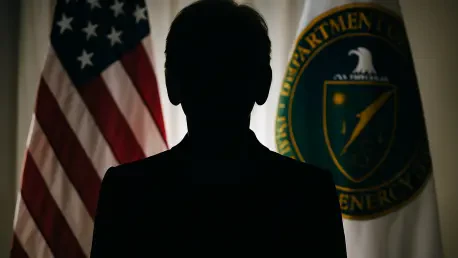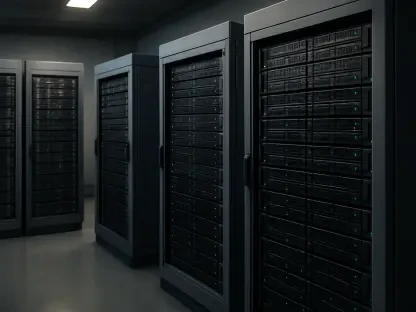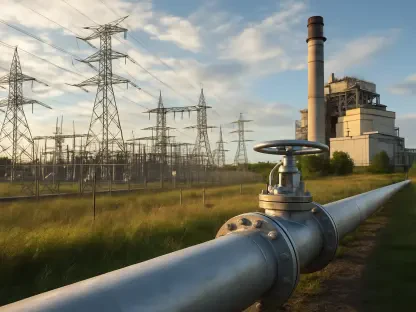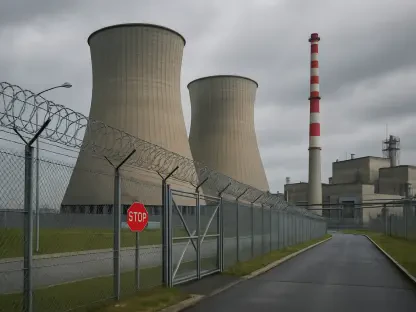Energy policy in the United States stands as a battleground of competing ideologies, economic interests, and political loyalties, often shaping the nation’s future in profound ways. Amid this charged landscape, Chris Wright’s tenure as Energy Secretary under President Donald Trump’s administration has emerged as a lightning rod for controversy. With billions of dollars in clean energy grants at stake and a White House pushing for rapid fossil fuel dominance, Wright’s leadership has sparked heated debate. This roundup gathers insights, critiques, and observations from various administration insiders, industry stakeholders, and congressional voices to unpack the complexities of his rocky relationship with the White House. The purpose is to provide a multifaceted view of the challenges, missteps, and potential lessons from his time in office, offering clarity on a critical yet divisive figure in energy policy.
Diving into the Discord: Policy Clashes and Frustrations
Clean Energy Grants: A Central Point of Contention
One of the most prominent issues surrounding Wright’s tenure centers on the handling of $30 billion in clean energy grants established under prior policies. Sources close to the administration reveal deep frustration with Wright’s methodical review process, which aimed to preserve select projects tied to fossil fuel-aligned technologies like hydrogen production. This approach starkly contrasted with the White House’s insistence on immediate cancellation of all such initiatives, viewing them as remnants of an opposing agenda.
Industry stakeholders note that Wright’s caution reflects a desire to balance economic impacts with political directives, a stance that has drawn mixed reactions. While some appreciate the effort to safeguard certain industrial interests, others within Trump’s inner circle see it as a direct challenge to the administration’s goals. The tension escalated when a senior budget official preemptively announced an $8 billion cut, sidelining Wright’s authority and exposing a significant rift in decision-making priorities.
This clash over grants underscores a broader ideological divide, with anonymous officials suggesting that Wright’s industry-focused lens often conflicts with the rapid, uncompromising rollbacks demanded by top leadership. The fallout has left lingering questions about whether such policy disagreements can be reconciled or if they signal an irreparable breach in trust.
Timing and Communication: Missed Deadlines and Missteps
Communication breakdowns have further compounded Wright’s challenges, particularly regarding the tight timelines set by the administration. Insiders highlight repeated delays in his evaluations of energy grants, noting a lack of urgency that frustrated key decision-makers. A notable incident involved a last-minute notification of grant cancellations just before a potential government shutdown, which caught White House aides off guard and intensified perceptions of disorganization.
The real-world consequences of these missteps became evident when control over $22 billion in remaining grants was shifted to another federal office, effectively marginalizing the Department of Energy in critical negotiations with Congress. This move, according to administrative sources, was a direct response to the perceived inefficiencies in Wright’s leadership, stripping his agency of influence at a pivotal moment.
Such timing issues have eroded confidence among Trump’s closest advisors, with some questioning whether Wright fully grasps the political stakes at play. The recurring pattern of delayed responses and poor coordination paints a picture of an Energy Secretary struggling to align with the fast-paced, directive-driven environment of the current administration.
Leadership Dynamics: Style, Expectations, and Internal Strife
Autonomy versus Hierarchy: A Clash of Approaches
Wright’s background as a fracking executive brought expectations of private-sector efficiency, but it has also fueled tensions within the rigid structure of government. Sources familiar with internal dynamics describe his tendency toward independent decision-making as a mismatch for the hierarchical expectations of the White House. This has led to perceptions that Wright occasionally oversteps, positioning himself as the ultimate authority on energy matters rather than a subordinate to presidential vision.
Within the Department of Energy, this clash of styles has manifested in significant dysfunction, marked by high-profile staff departures and factional disputes. Anonymous accounts point to a divided agency, with some loyal to Wright’s vision and others aligned more closely with administration priorities, creating an environment of internal friction that hampers effective governance.
Despite these challenges, a few industry voices argue that Wright’s consultative approach could yield long-term benefits by grounding policy in practical realities. The question remains whether this strategic patience can withstand the immediate demands of a politically charged setting, or if it will continue to be seen as a liability by those at the top.
Industry Input versus Political Loyalty: A Delicate Balance
Unlike other agency heads who swiftly aligned with Trump’s fossil fuel-first objectives, Wright has prioritized feedback from industry stakeholders before acting on major policy shifts. This divergence has earned him praise from certain congressional figures who value his pragmatic consideration of local and economic impacts, describing him as a thoughtful leader in an otherwise aggressive policy landscape.
Comparatively, other Trump-appointed leaders have moved with greater speed to dismantle prior environmental initiatives, often bypassing extensive consultation. This contrast highlights Wright’s unique position, as noted by some legislative supporters who see his actions as a bridge between industry needs and political goals, even if they slow the pace of change desired by the White House.
Looking ahead, this balancing act raises speculation about its broader implications for energy policy. Will Wright’s emphasis on stakeholder engagement reshape how decisions are made, or will it further isolate him from the core support base within the administration? The outcome remains uncertain, but it underscores a critical tension in his role.
Key Takeaways: What the Controversy Reveals
Synthesizing the diverse perspectives, several critical insights emerge about Wright’s tenure. Policy disagreements, particularly over clean energy grants, stand as a primary driver of discord, revealing deep ideological divides between a methodical, industry-informed approach and the administration’s push for swift action. Communication failures have amplified these tensions, with missed deadlines and last-minute decisions undermining trust among key players.
Additionally, personal incompatibilities and leadership style differences highlight the difficulty of transitioning from private-sector autonomy to government constraints. Internal agency strife further complicates the picture, reflecting broader challenges in aligning a complex department with overarching political objectives. These observations collectively point to the fragility of Wright’s position despite occasional support from external voices.
The roundup also suggests practical lessons for navigating such high-stakes roles, emphasizing the need for clear alignment with administration priorities and streamlined internal operations. Adaptability and relationship-building appear essential for success in an environment where political loyalty often outweighs technical expertise, offering a roadmap for others in similar positions.
Reflecting on the Path Forward
Looking back, the myriad opinions and critiques gathered in this roundup paint a vivid portrait of Chris Wright’s embattled tenure as Energy Secretary. The discord with the White House, fueled by policy rifts and operational missteps, underscores the immense challenges of steering energy policy in a polarized administration. Internal dysfunction and stylistic clashes only add to the strain, creating a narrative of missed opportunities and mounting frustrations.
Moving forward, a viable next step could involve fostering stronger channels of communication between Wright’s team and top administration officials to prevent future breakdowns. Building a more cohesive internal structure at the Department of Energy might also help mitigate factional disputes, ensuring a unified front on critical issues. For those intrigued by the evolving landscape of energy policy, exploring further analyses on the intersection of industry and politics could provide deeper context into how such conflicts might shape national strategies in the years ahead.









